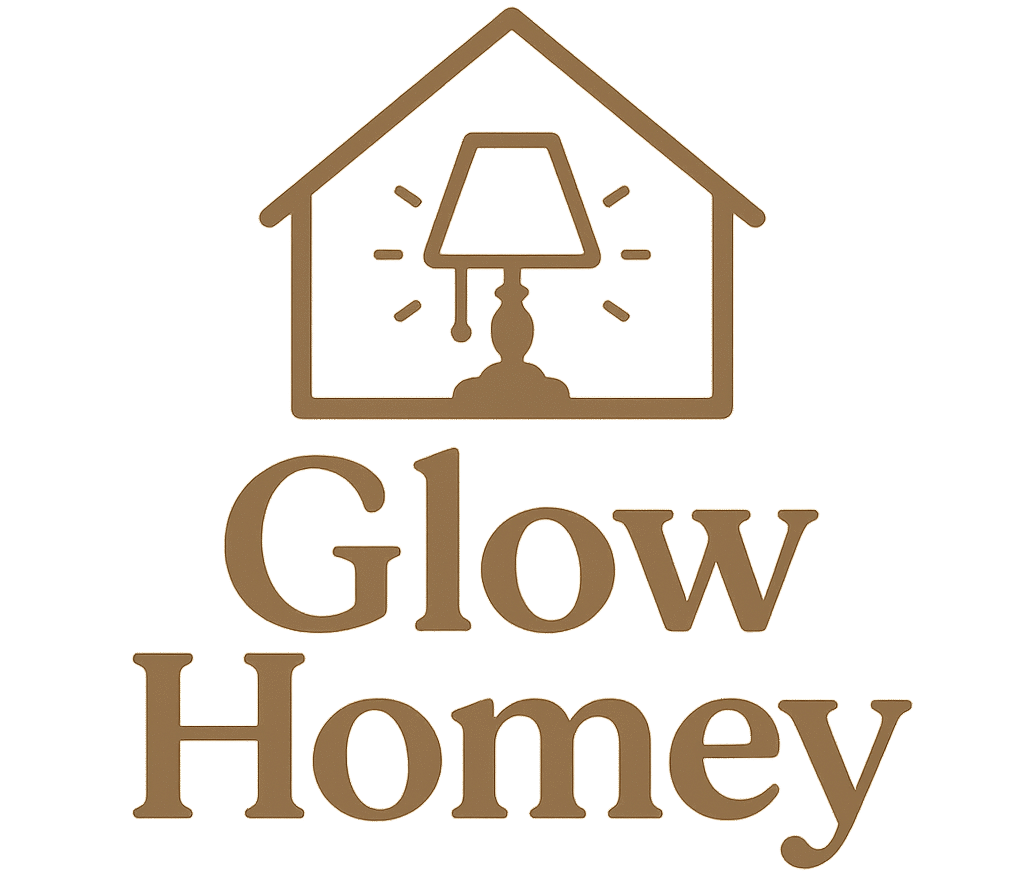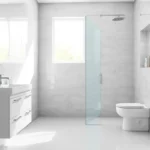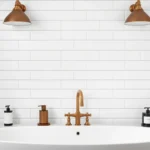We’ve all been there – staring at a cluttered desk wondering how we’ll ever find that important document buried somewhere in the chaos. A disorganized office doesn’t just waste time; it drains our energy and kills productivity before we even start our workday.
The good news? Transforming your workspace from chaotic to efficient doesn’t require a complete overhaul or expensive answers. With the right organization strategies we can create a system that actually works for our daily workflow while keeping everything within arm’s reach.
Whether you’re working from a cramped home office or spacious corporate workspace we’ll explore practical organization ideas that’ll revolutionize how you approach your workday. From smart storage answers to desk layout optimization these proven strategies will help you maintain a clutter-free environment that boosts both focus and productivity.
Declutter Your Desk With Smart Storage Solutions
Clearing your desk surface creates immediate visual calm and establishes the foundation for improved workflow efficiency. Smart storage answers transform chaotic workspaces into organized command centers that support daily productivity goals.
Desktop Organizers and Trays
Desktop organizers maximize horizontal space by creating designated spots for frequently used items like pens, paper clips, and sticky notes. Multi-compartment trays sort office supplies into logical categories while keeping essentials within arm’s reach.
Stackable drawer units provide additional storage layers without consuming extra desk real estate. These modular systems accommodate growing storage needs and adapt to changing workspace requirements over time.
Letter trays establish priority systems for incoming and outgoing documents while preventing paper pile accumulation. Clear acrylic options maintain visual lightness while wooden versions add warmth to professional environments.
Rotating desk caddies bring frequently accessed supplies to your fingertips with a simple spin motion. These space-efficient organizers work particularly well in shared office environments where multiple users need quick access to common supplies.
Cable Management Systems
Under-desk cable trays eliminate the tangled wire mess that accumulates beneath workstations while improving safety and aesthetics. These mounting systems keep power cords and data cables organized and easily accessible for equipment changes.
Cable clips attach to desk edges and guide individual wires along predetermined paths to prevent drooping and tangling. Adhesive-backed clips work on most surfaces while magnetic versions offer flexibility for metal desks.
Cord boxes conceal power strips and excess cable length within attractive housings that blend seamlessly with office decor. These answers reduce visual clutter while protecting electrical connections from dust and accidental disconnection.
Cable sleeves bundle multiple wires into single, manageable runs that create cleaner sight lines and simplify equipment relocation. Flexible mesh sleeves expand to accommodate varying cable quantities while maintaining a professional appearance.
Vertical File Holders
Wall-mounted file organizers reclaim valuable desk surface area by moving document storage to vertical wall space. These systems accommodate various paper sizes while keeping important files visible and accessible.
Desktop file sorters create instant filing systems for active projects and reference materials without requiring wall installation. Adjustable dividers accommodate different document thicknesses while maintaining organized categories.
Magazine holders transform into project organizers by storing binders, notebooks, and presentation materials in upright positions. Labels on each holder identify contents quickly while maintaining a uniform appearance across the workspace.
Tiered file racks provide multiple filing levels within a compact footprint while allowing easy access to documents from any tier. These graduated systems work well for prioritizing current projects over archived materials.
Create Designated Zones for Different Tasks
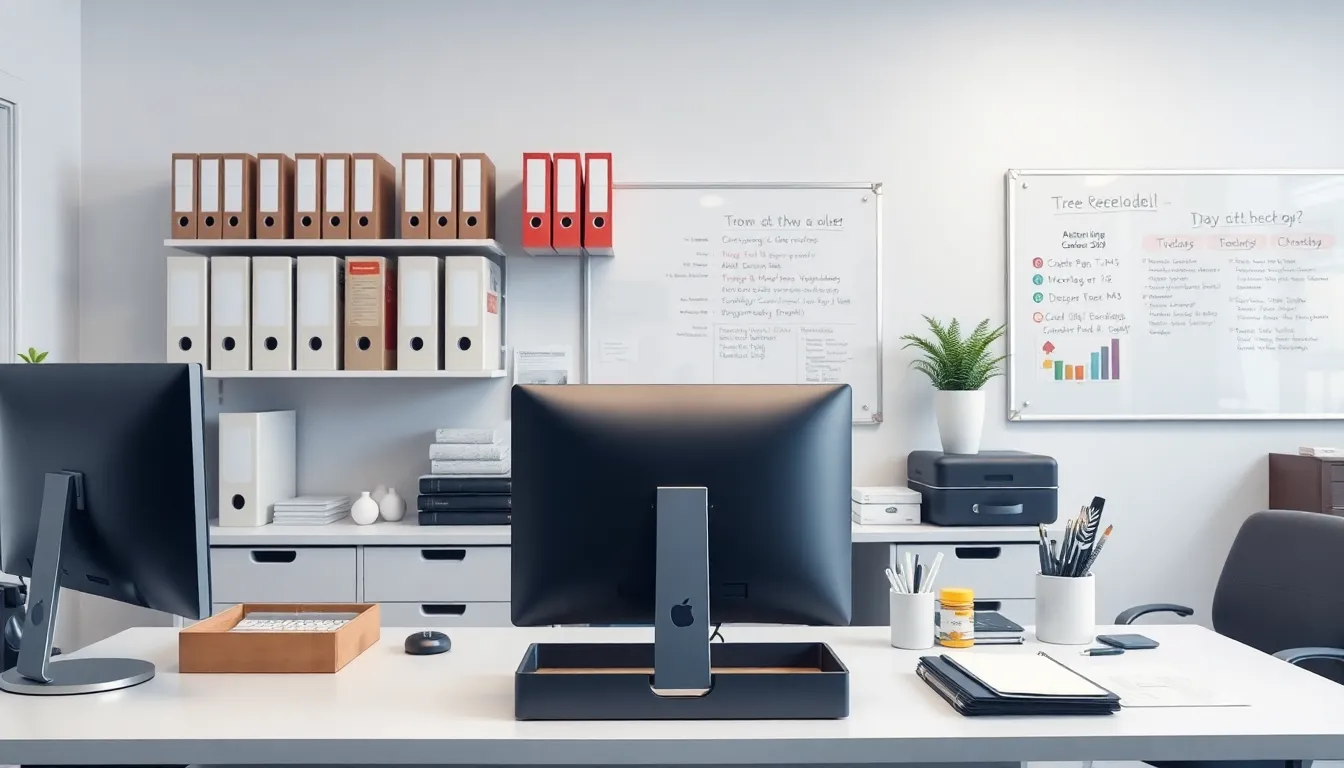
Establishing exact areas for different work activities transforms chaos into structured productivity. This strategic approach helps streamline workflow while minimizing distractions that can derail our focus throughout the day.
Work Zone Setup
Optimize your primary workspace by tailoring the layout to match your individual workflow needs. Position your computer monitor at least 20 inches in front of you to reduce eye strain and maintain proper ergonomic alignment. Keep essential tools like keyboards, mice, and notepads within arm’s reach to eliminate unnecessary stretching or searching.
Arrange items based on frequency of use to maximize efficiency during busy workdays. Place your most commonly accessed supplies directly on the desktop while storing secondary items in nearby drawers or shelves. Consider adding task lighting to complement overhead fixtures and create a well illuminated environment that supports extended work sessions.
Clear your desk surface regularly to maintain the psychological benefits of an organized workspace. Studies show that cluttered desks can significantly impact both efficiency and productivity levels throughout the workday.
Reference Material Area
Use vertical wall space to house documentation, files, and resources required for ongoing projects. Mount shelving units or floating shelves above your work zone to keep reference materials visible yet out of the way. This approach keeps your desk surface clear while ensuring important documents remain easily accessible.
Install whiteboards or bulletin boards to categorize tasks, deadlines, and important reminders in a visual format. These tools make it easier to track project progress and prioritize daily activities without shuffling through paper documents. Position these boards within your natural line of sight to maximize their effectiveness.
Organize reference materials using binders, folders, or magazine holders to create a systematic filing approach. Label each container clearly to reduce time spent searching for exact documents during critical work moments.
Supply Storage Zone
Designate a exact area for office essentials using stackable boxes, drawer organizers, and desktop trays to tame small items effectively. This dedicated storage zone reduces visual clutter while ensuring supplies remain organized and accessible when needed.
Store frequently used supplies in the closest proximity to your work zone while placing less common items in secondary storage areas. Use drawer dividers and small containers to separate pens, paperclips, sticky notes, and other miscellaneous supplies that tend to create desk chaos.
Maximize storage space by implementing vertical storage answers such as rolling carts or tall storage cabinets. These options provide ample room for supplies while maintaining the clean aesthetic of your organized office environment.
Label storage containers to help maintain the system long term and ensure other team members can locate supplies when needed. This simple step prevents the gradual return to disorganized storage habits that undermine productivity goals.
Maximize Vertical Space With Wall-Mounted Options
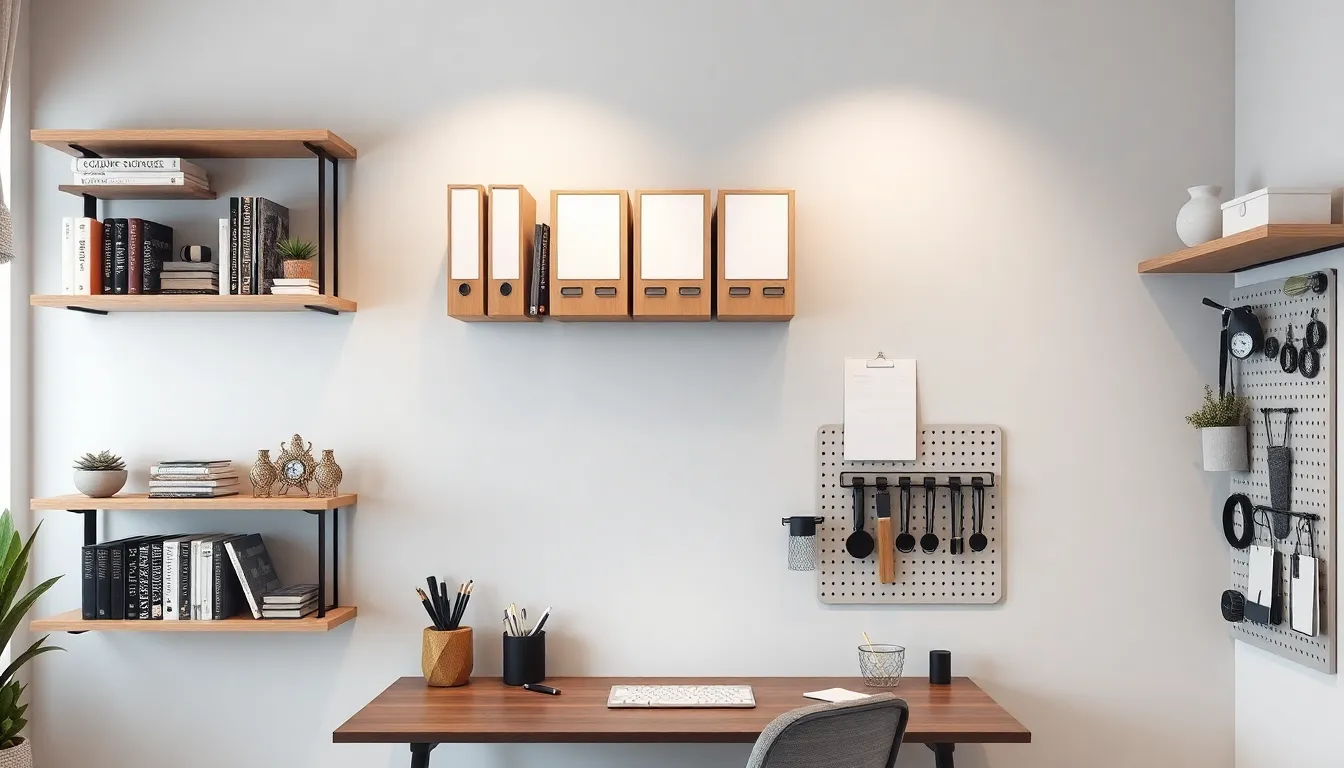
We can dramatically expand our office storage capacity by utilizing wall space that’s often overlooked. Wall mounted answers keep our desks clear while maintaining easy access to essential items.
Floating Shelves and Brackets
Floating shelves provide stylish storage for books, binders, and decorative items without consuming valuable floor space. Modern designs create an organized look while offering practical functionality for our daily office needs. Strategic placement maximizes both safety and accessibility by positioning heavier items on lower shelves and lighter materials higher up. Books and reference materials work perfectly on upper levels, while binders and frequently used supplies belong within easy reach.
Wall-Mounted File Systems
Comprehensive organizing systems combine file holders, corkboards, and magnetic boards to create command centers above our desks. Important documents stay within easy reach while maintaining clear workspace surfaces. Customization allows us to fit exact office requirements by adjusting components based on our workflow patterns. Document categories can be separated using different holder types, ensuring everything has its designated place and remains easily accessible throughout the workday.
Pegboard Organization Panels
Pegboards offer innovative storage beyond traditional office supplies by accommodating headphones, keys, and small planters. These panels add personality while maximizing functionality in our workspace design. Vertical space utilization keeps our office tidy and organized by providing designated spots for frequently used items. Tools, accessories, and personal items can all find homes on these versatile panels, creating efficient storage that adapts to our changing needs.
Implement Digital Organization Systems

We’re transitioning from physical storage answers to digital organization systems that can revolutionize how we manage our workspace efficiency. Modern offices benefit significantly from digital tools that streamline document management and reduce time spent searching for important files.
Cloud-Based File Management
Cloud storage platforms like OneDrive and Google Drive transform how we organize and access our work files. These services allow us to create structured folder hierarchies that mirror our physical filing systems while providing instant access from any device. Consistent naming conventions become crucial when organizing digital files, helping us locate documents quickly without frustration.
File synchronization across multiple devices ensures we always have access to the latest versions of our documents. We can establish shared folders for team collaboration while maintaining individual workspace organization. Regular file cleanup and archiving old documents prevent cloud storage from becoming cluttered digital junk drawers.
Digital Calendar Integration
Shared digital calendars eliminate scheduling conflicts and keep our entire team aligned on important deadlines and meetings. We can create multiple calendar layers for different projects, personal tasks, and team events to maintain clear visibility of our commitments. Color coding different types of appointments helps us quickly identify priorities at a peek.
Automated reminders and notifications ensure we never miss important deadlines or follow up tasks. Calendar integration with other digital tools creates seamless workflows where meeting notes, project files, and task lists connect automatically. We can schedule recurring appointments for regular team check ins and maintenance tasks that keep our organization systems running smoothly.
Paperless Workflow Answers
Digital signature tools like DocuSign eliminate the need for printing, signing, and scanning documents, reducing paper clutter significantly. We can create approval workflows that route documents electronically through multiple stakeholders without physical handoffs. Automated workflow systems manage routine tasks and processes, freeing up time for more strategic work.
Document management platforms like Adobe Acrobat help us organize digital files systematically and reduce search time frustration. We can establish electronic filing systems that automatically categorize and store documents based on predefined rules. Digital forms and templates standardize information collection while eliminating paper forms that often get lost or misfiled.
Use Multi-Functional Furniture for Hidden Storage
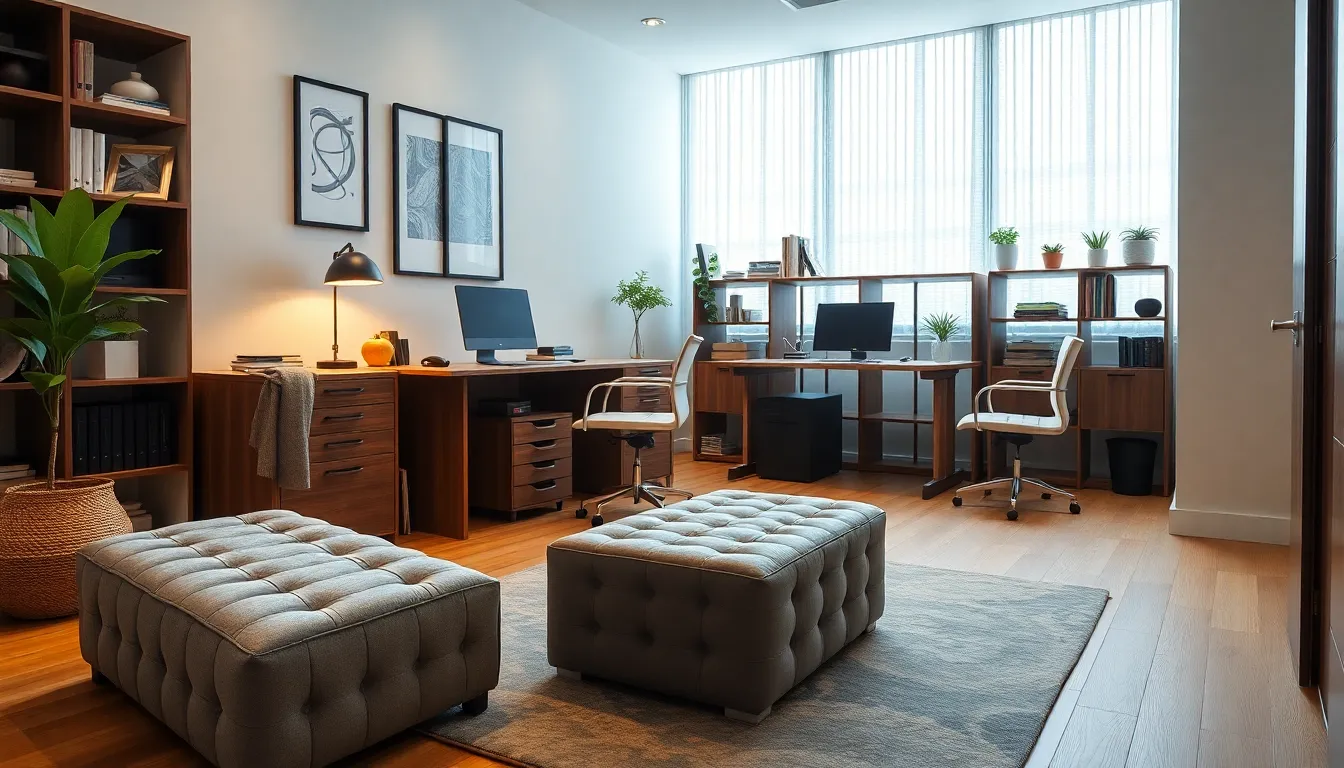
Furniture that serves multiple purposes transforms cluttered offices into organized workspaces while maximizing every square foot. We can eliminate visual chaos by choosing pieces that store items inside while providing essential functionality.
Storage Ottoman Answers
Storage ottomans deliver dual benefits as seating and storage units in any office environment. We recommend using these versatile pieces to store documents, office supplies, seasonal items, or backup equipment that doesn’t require daily access. Ottoman storage works particularly well near desks or in meeting areas where extra seating becomes necessary during collaborative sessions. Fabric ottomans with hinged tops can hold printer paper, binders, or reference materials while providing comfortable seating for visitors. Leather storage ottomans offer professional aesthetics for executive offices while concealing important files or personal items inside spacious compartments.
Desk With Built-In Drawers
Desks featuring integrated drawer systems keep essential supplies organized and within arm’s reach during work hours. We find that desks with multiple drawer sizes accommodate different storage needs, from small items like paper clips and USB drives to larger supplies like staplers and notebooks. Built-in file drawers eliminate the need for separate filing cabinets while maintaining easy access to important documents. Desks with locking drawers provide security for sensitive materials or personal belongings without requiring additional furniture pieces. Standing desks with incorporated storage drawers combine ergonomic benefits with organization answers, making them ideal for health-conscious professionals who need accessible storage.
Bookshelf Room Dividers
Bookshelf dividers create distinct workspace zones while providing extensive storage capacity for books, binders, and office supplies. We use these functional pieces to separate collaborative areas from focused work zones without building permanent walls. Open-back bookshelf dividers maintain visual flow between spaces while offering storage access from both sides, making them perfect for shared offices or coworking environments. Bookshelf room dividers with mixed shelf heights accommodate various items, from tall binders to small decorative pieces that personalize the workspace. These versatile storage answers work exceptionally well in open floor plans where privacy and organization both matter for productivity.
Label Everything for Easy Identification
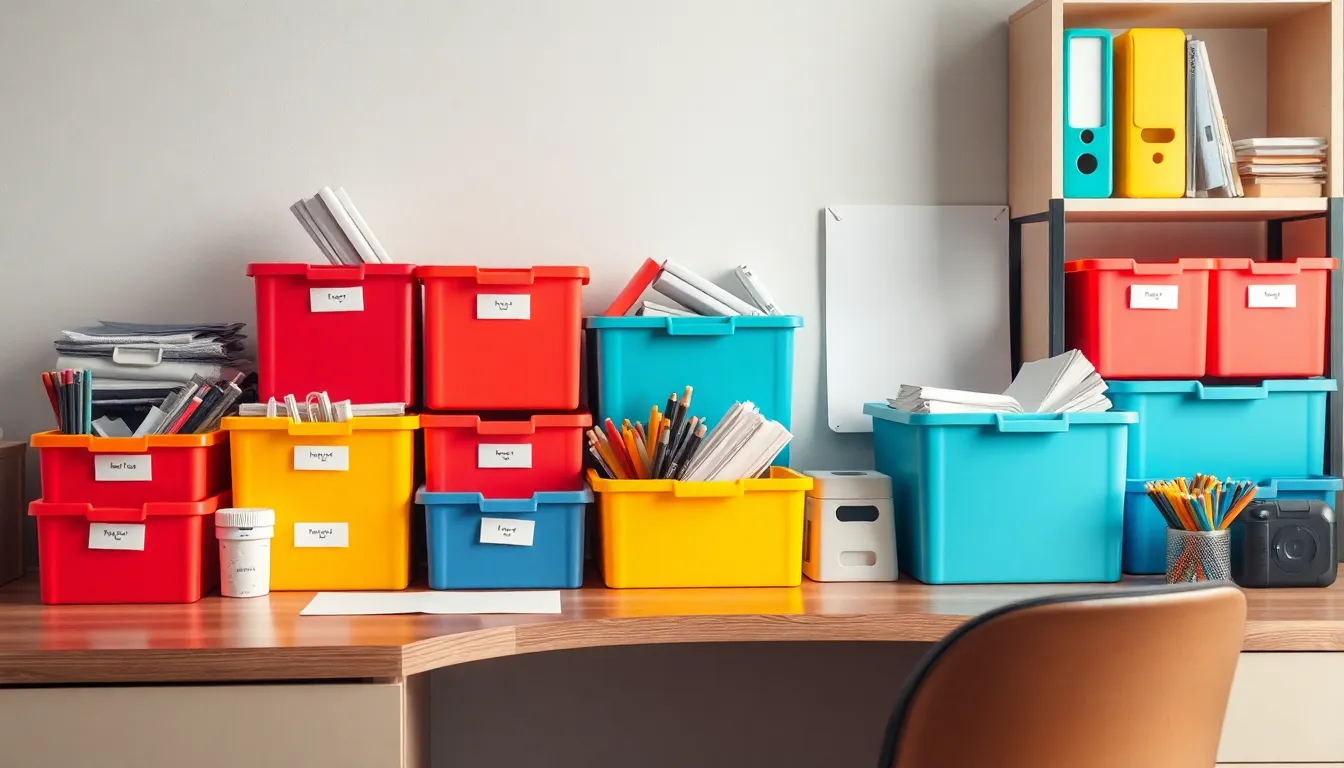
Implementing a comprehensive labeling system transforms chaotic workspaces into streamlined environments where every item has its designated place. We’ll explore proven labeling strategies that reduce search time and enhance workflow efficiency throughout your office.
Color-Coded Labeling Systems
Color coding creates instant visual recognition that speeds up item location and categorization processes. We recommend assigning exact colors to different file types, project categories, or urgency levels to streamline your organizational system. Red labels work perfectly for urgent documents, while blue tags can designate ongoing projects and green markers identify completed tasks.
Office supplies benefit tremendously from color coordinated storage systems that prevent mix ups and confusion. We suggest using yellow bins for writing materials like pens and pencils, orange containers for technical supplies such as staplers and hole punchers, and purple storage for specialty items including presentation materials. This approach eliminates guesswork and maintains consistency across your entire workspace.
Department exact color schemes enhance team collaboration and reduce cross departmental confusion in larger offices. We’ve found that assigning unique colors to each department creates clear boundaries and ownership while maintaining visual harmony throughout the workspace.
Clear Container Labels
Clear labeling on storage containers eliminates the need to open multiple boxes when searching for exact items. We recommend using waterproof labels that withstand daily handling and maintain their adhesive properties over time. Bold, readable fonts ensure quick identification from various distances and angles throughout your workspace.
Detailed descriptions on container labels save valuable time during busy workdays and prevent items from being misplaced. We suggest including both the primary contents and quantity information on each label, such as “Copy Paper – 500 sheets” or “USB Cables – 15 units.” This level of detail helps maintain accurate inventory and prevents unnecessary reordering.
Standardized label formats create consistency that benefits everyone who uses the workspace or storage areas. We recommend establishing exact label sizes, font types, and information hierarchies that team members can easily follow and maintain over time.
Digital Asset Tagging
Digital file organization requires systematic tagging approaches that make electronic documents as accessible as physical ones. We recommend creating standardized naming conventions that include project codes, dates, and document types to ensure files remain searchable across your network. Tags like “2025_ProjectAlpha_Contract” provide immediate context and prevent digital clutter from accumulating.
Metadata tagging enhances file searchability beyond simple filename recognition and creates powerful organizational structures. We suggest using document management platforms that allow multiple tag assignments, enabling files to appear in various category searches. Keywords such as “budget,” “quarterly,” and “presentation” can be applied to single documents for maximum accessibility.
Automated tagging systems reduce manual effort while maintaining consistent digital organization standards throughout your office network. We recommend implementing tools that automatically assign tags based on file types, creation dates, or folder locations to minimize human error and ensure comprehensive coverage of your digital assets.
Establish Daily Maintenance Routines
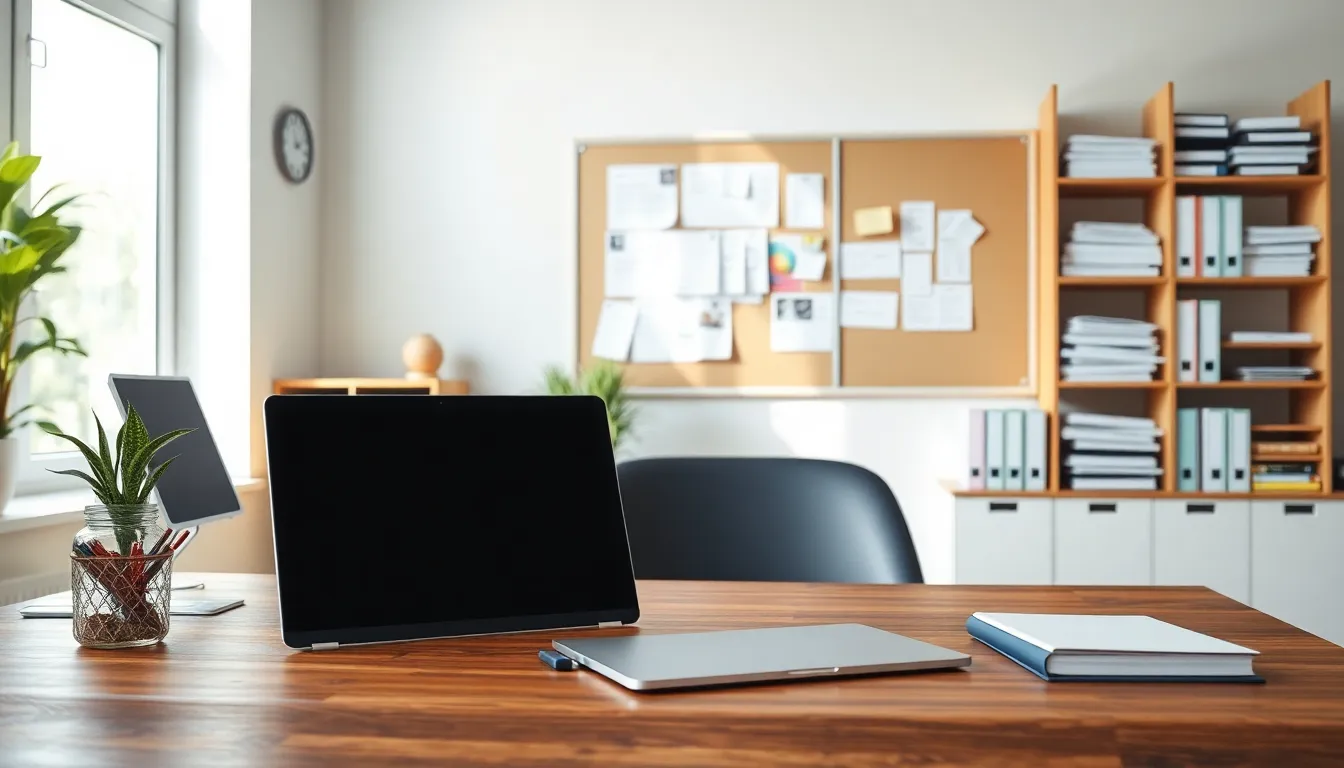
Daily habits form the foundation of sustainable office organization, preventing clutter from overwhelming our carefully designed workspace systems. These consistent routines ensure our organizational investments continue delivering productivity benefits long term.
End-of-Day Cleanup Habits
Clear workstations completely before leaving each day to maintain the psychological benefits of an organized environment. We should remove all personal items from desk surfaces and return supplies to their designated storage zones.
Power down equipment properly while checking that all lighting systems are turned off to save energy and extend device lifespans. This simple habit prevents unnecessary wear on office technology and reduces operational costs.
Sanitize high-touch surfaces using disinfectant wipes on doorknobs, light switches, keyboards, and phone handsets to maintain workplace health standards. Regular cleaning of these contact points creates a more hygienic work environment for everyone.
Organize common areas by returning shared supplies to their labeled containers and wiping down surfaces in break rooms and meeting spaces. We’ve found that collective responsibility for these areas prevents accumulation of clutter and maintains professional standards.
Weekly Organization Reviews
Deep clean individual workspaces by moving equipment to clean behind monitors and around cable management systems we’ve installed. This thorough approach reaches areas that daily maintenance typically misses and keeps our organized zones functioning optimally.
Review refrigerator contents to prevent odors and spills from developing in shared kitchen spaces. We recommend checking expiration dates and removing abandoned items that can create unpleasant conditions in common areas.
Inspect wall-mounted storage systems and floating shelves to ensure documents remain properly filed and supplies stay within their designated containers. Regular checks prevent our vertical storage answers from becoming disorganized or overloaded.
Audit office supply inventory to identify items needing restocking before shortages disrupt workflow efficiency. This proactive approach ensures our organized supply zones remain fully functional throughout busy work periods.
Monthly Deep Organization Sessions
Perform comprehensive space cleaning including carpets, windows, and all high-traffic areas that accumulate dust and debris over time. These deeper cleaning sessions maintain the professional appearance that supports our organized workspace culture.
Service ventilation systems by cleaning air vents and replacing filters to ensure proper airflow throughout organized office zones. Clean air circulation prevents dust buildup that can compromise both health and the effectiveness of our storage systems.
Conduct complete inventory assessment of all storage containers, filing systems, and supply organization to identify areas needing adjustment or expansion. Monthly reviews help us adapt our organizational systems as workflow needs evolve.
Reorganize storage spaces by decluttering accumulated items and optimizing container arrangements based on actual usage patterns we’ve observed. This systematic approach keeps our storage zones efficient and prevents overcrowding that can undermine organizational effectiveness.
Optimize Lighting and Ergonomics for Productivity
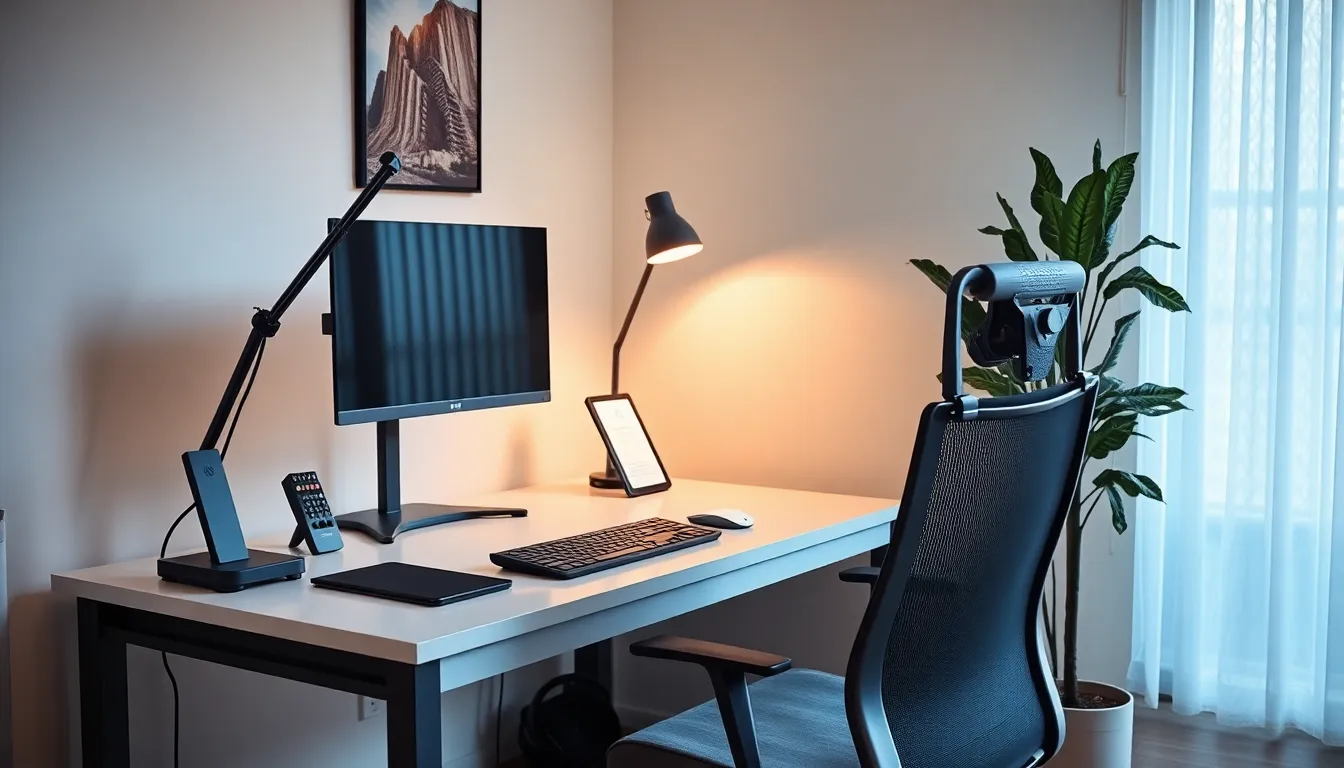
Creating the right lighting conditions and ergonomic setup transforms our workspace into a productivity powerhouse. Physical comfort and visual clarity work together to reduce fatigue and maintain focus throughout demanding workdays.
Task Lighting Answers
Desk lamps enhance focus by providing targeted illumination exactly where we need it most. LED task lights offer adjustable brightness levels and consume less energy than traditional bulbs. Under cabinet lighting strips eliminate shadows on our work surface and create even illumination for detailed tasks. Track lighting systems allow us to direct light precisely where we’re working without creating glare on computer screens.
Reading lights reduce eye strain during document review and note taking sessions. Adjustable arm lamps give us the flexibility to position light sources at optimal angles. Clip on lights attach directly to monitors or shelves for space saving answers. Task lighting should provide 500 to 1000 lux at the work surface for comfortable reading and writing activities.
Monitor Positioning
Monitor placement at eye level prevents neck strain and promotes better posture throughout the workday. The top of our screen should sit at or slightly below eye level to maintain a neutral head position. Distance matters too – we should position monitors 20 to 25 inches away from our eyes for optimal viewing comfort. Dual monitor setups require careful angling to avoid constant head turning between screens.
Screen tilt adjustments eliminate glare and reflections that cause visual discomfort. Tilting the monitor back 10 to 20 degrees helps reduce reflections from overhead lighting. Height adjustable monitor arms provide flexibility to accommodate different users and tasks. Monitor positioning directly impacts our productivity by reducing the physical stress that leads to fatigue and distraction.
Ergonomic Accessory Placement
Keyboard positioning keeps our wrists straight and reduces repetitive strain injury risks. We should place keyboards so our hands rest at or below elbow level with relaxed shoulders. Ergonomic keyboards with split designs accommodate natural hand positioning better than traditional flat keyboards. Keyboard trays adjust to proper heights when desk surfaces sit too high for comfortable typing.
Mouse placement within easy reach prevents shoulder strain and awkward reaching motions. The mouse should sit at the same level as our keyboard and close enough to avoid extending our arm. Ergonomic mice with proper palm support reduce wrist pressure during extended computer use. Document holders position reference materials at eye level to minimize neck movement between paper and screen.
Footrests support proper posture when our feet don’t reach the floor comfortably. Adjustable footrests accommodate different leg lengths and provide stable support throughout the day. Ergonomic accessories work together as a system – proper placement of each component supports overall comfort and sustained productivity in our organized workspace.
Conclusion
We’ve shown you that creating an organized office doesn’t require a complete overhaul of your workspace. The strategies we’ve outlined work together to build a system that supports your daily productivity goals while reducing stress and distractions.
Remember that consistency is key to maintaining your newly organized space. The daily maintenance routines and digital systems we’ve discussed will help prevent clutter from creeping back into your workflow.
Start with one area that bothers you most and gradually carry out these answers. Your future self will thank you for the time invested in creating an organized command center that truly works for your unique needs.
Frequently Asked Questions
How does a cluttered office affect productivity?
A cluttered office negatively impacts productivity by creating distractions, increasing stress levels, and making it difficult to locate essential items quickly. Visual clutter overwhelms the brain, reduces focus, and drains mental energy. An organized workspace enhances concentration, streamlines workflow, and creates a more professional environment that supports better work performance.
What are the most effective smart storage solutions for desk organization?
Desktop organizers, stackable drawer units, and rotating desk caddies are highly effective for desk organization. These solutions maximize space while keeping frequently used items within arm’s reach. Cable management systems eliminate wire tangles, while vertical file holders utilize wall space to store documents without cluttering the desk surface.
How can I create designated zones in my workspace?
Create designated zones by dividing your workspace into specific areas for different tasks. Position your primary work area with essential tools within arm’s reach, establish a supply storage zone with labeled containers, and use vertical wall space for reference materials. Install whiteboards or bulletin boards for task management to maintain clear boundaries between different work functions.
What wall-mounted storage options work best for small offices?
Floating shelves, wall-mounted file systems, and pegboard panels are excellent wall-mounted storage options. Floating shelves provide stylish storage for books and supplies, while wall-mounted file systems keep important documents organized and accessible. Pegboard panels offer versatile storage for various items and can be customized to match your workspace aesthetic.
How can digital organization systems improve workspace efficiency?
Digital organization systems streamline workflow through cloud-based file management platforms like OneDrive and Google Drive. These systems enable structured folder hierarchies, consistent naming conventions, and easy access from any device. Digital calendars eliminate scheduling conflicts, while paperless workflows reduce physical clutter and improve document accessibility through automated processes.
What multi-functional furniture is best for office organization?
Storage ottomans, desks with built-in drawers, and bookshelf room dividers are ideal multi-functional furniture pieces. Storage ottomans provide seating while hiding supplies, built-in desk drawers keep essentials organized and accessible, and bookshelf dividers create distinct workspace zones while offering additional storage capacity for books and supplies.
Why is labeling important for workspace organization?
Labeling is crucial for quick identification and maintaining organization standards. Color-coded labeling systems enhance visual recognition, clear container labels eliminate confusion and save time, and standardized formats ensure consistency. Digital asset tagging with systematic naming conventions improves file searchability and reduces time spent locating important documents.
How often should I maintain my organized workspace?
Implement daily end-of-day cleanup routines, weekly organization reviews, and monthly deep cleaning sessions. Daily maintenance includes clearing workstations and sanitizing surfaces, weekly reviews involve deep cleaning and supply audits, while monthly sessions focus on comprehensive cleaning and inventory assessments to prevent clutter accumulation.
What lighting and ergonomic considerations improve productivity?
Proper task lighting with LED desk lamps reduces eye strain and improves focus. Position monitors at appropriate distances and angles to prevent neck strain. Place keyboards and mice ergonomically to reduce repetitive strain injuries, and use footrests to support proper posture, creating a cohesive system that enhances overall workspace productivity.
